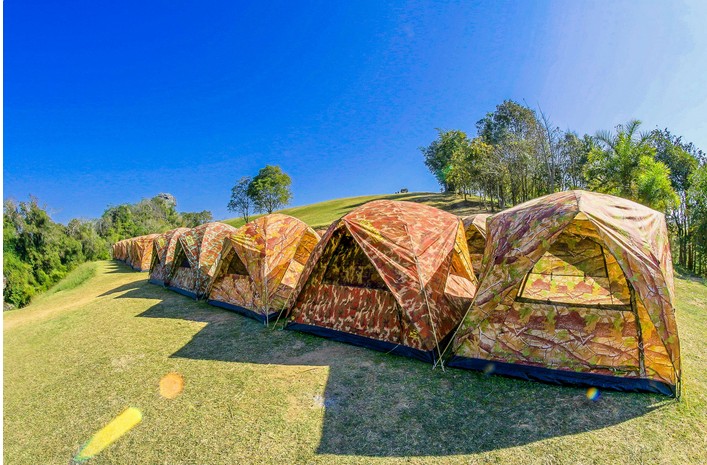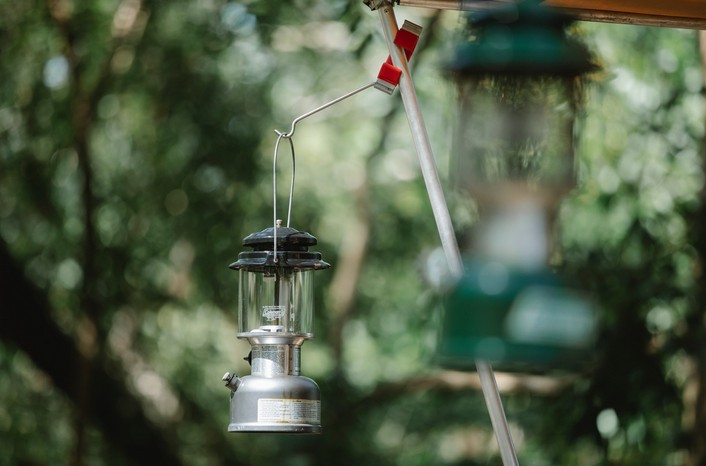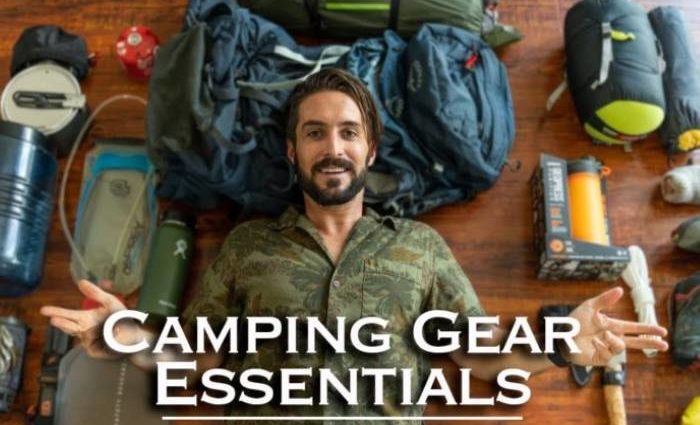Every year, a slew of new or updated goods appear in the outdoor outfitting business. Always keep your gear’s primary functions in mind; this will help you navigate through the enormous number of options and determine which features are vital and which are unnecessary.
Table of Contents
Camping Equipment – Sleeping Bags
Sleeping bags are generally classified by their shape and filling.
Mummy Bags vs. Rectangular Bags
Mummy bags have a snug hood and are close-fitting and tapering at the foot. They’re necessary for cold-weather camping, but they’re too hot to sleep in in the summer. The mummy bag’s form might also be claustrophobic for certain campers. Classic rectangle bags, on the other hand, lack the warmth of mummy bags but allow for more movement and may be linked to other sleeping bags to make two- or three-person bags more readily. For recreational campers, this style is usually suitable.
Down Filling vs. Synthetic Filling
Down-filled sleeping bags are more expensive up front, but they can save you money in the long term because they’re lighter, more breathable, compress to a smaller size, and can last for decades (whereas synthetic bags need to be replaced every few years). Wet down bags, on the other hand, take a long time to dry, making for miserable nights. Aside from the lower pricing, the main advantage of sleeping bags with synthetic filling (typically a polyester fiber such as Polarguard®, Hollofil®, or Quallofil®) is that they dry quickly.
How to Choose a Sleeping Bag
Consider the overnight temperatures at the spot you plan to visit, as well as how much you normally move and how cold you get at night, when picking a sleeping bag form. Due to the fact that everyone’s metabolism is different, some people require more insulation than others.
Before you buy a bag, give it a try. Try getting in and out of it a few times to evaluate how comfortable you are. Examine the zipper, which should be strong, two-way, and extend the entire length of the bag. A draft tube should be included in the zipper, which covers and insulates the whole inside of the zipper and is essential for avoiding heat loss.
Camping Equipment – Sleeping Pads
A sleeping pad is placed beneath your sleeping bag and has two purposes: to cushion you from unpleasant ground bumps and to keep you warm and dry. A sleeping bag alone is rarely enough to keep you warm: laying on the cold ground for hours causes significant heat loss. In a pinch, folded-up extra blankets will suffice, but they may result in a bumpy sleeping surface and are cumbersome to transport. There are more convenient and pleasant solutions available.
Self-Inflating Mattress
Essentially a lighter, more compact version of an air mattress, a self-inflating mattress is comfortable and durable. However, it needs to be repaired or replaced if punctured or torn.
Closed-Cell Foam Pad
A closed-cell foam pad is far less expensive than a self-inflating mattress, and it may be used even if it has been punctured or torn. The RidgeRest® from Therm-a-Rest is a popular mattress of this type.
Camping Equipment – Tents

A good tent should be light, breathable, long-lasting, and waterproof. Tight stitching, a smooth zipper system, and aluminum poles are all features of a well-made tent. To avoid collecting too much heat, bright-colored materials reflect light. The interior layer of a tent is made of breathable nylon, while the outside layer, known as the rain fly, keeps the inside dry. If the rain flap doesn’t cover the entire tent, you’re in for a drenched night.
Vestibules are a common addition to many homes. These are essentially tent foyers that give additional storage space while also protecting the tent’s entrance from the elements. Vestibules are essential in all weather, but they are especially important for winter camping.
Types of Tents
A-frame tents, hoop tents, and dome tents are three prominent tent designs.
- A-frame: Shaped like a capital A, with sharply sloping sides and a central point
- Hoop: Features several arched poles that create a tunnel inside the tent
- Dome: Has two or more large poles that overlap to form a hemispherical roof
|
Tent Type
|
Advantages
|
Disadvantages
|
||
|
A-frame
|
|
|
||
|
Hoop
|
|
|
||
|
Dome
|
|
|
How to Choose a Tent
Estimate that each camper will require 3′ 7′ of room in the tent as a general rule. When shopping for tents, keep these dimensions in mind: some “four-person” tents may only fit two people. Tents are always a trade-off between weight and volume. If you’re going hiking, every pound counts: you’d be wise to forego a large tent in favor of one that you can carry comfortably. If you’re camping by car or simply plan to stay at one sleeping spot for the duration of your vacation, the weight of your tent will be less of an issue.
Test out various tents before making a decision, just as you would with sleeping bags. A good camping equipment store will have a range of tents set up and will allow you to take them down and put them back up.
Camping Equipment – Backpacks

If you’re going on a short trip and have access to a car, a daypack might be all you need. A well-made backpack, on the other hand, is a must-have if you’ll be carrying everything on your back. Carry no more than 25% of your body weight on your back: if you weigh 160 pounds, no more than 40 pounds should be carried on your back. Backpacks are divided into two categories:
- External-frame pack: This type of pack features a huge, rectangular frame, usually made of aluminum, to which the pack and its contents are attached. It’s made to carry hefty weights and distribute weight over your hips, relieving pressure on your back. The space created by the frame between your back and your pack helps air to circulate more easily, which is especially beneficial in hot weather. In addition, if necessary, you can tie additional equipment to the frame. However, in situations where balance is crucial, such as on rocky terrain, an external frame is less than ideal: the trade-off for the high center of gravity and robust frame structure is a loss of stability.
- Internal-frame pack: This pack has all of the structural parts of an external-frame pack. A pack with an internal frame is more flexible and more suited for use on shaky terrain. It also conforms more precisely to your body and, with time, takes on the shape of your back. Despite the fact that an internal frame might be hot on your back and costs more than an external frame, its benefits have made it a popular choice among many travelers.
Suspension System
The suspension system, which comprises of various components, determines the fit and comfort of your backpack. Make sure you can simply change all of them.
- Hip belt: Distributes the weight of the load on your hips. The upper ridge of the hip belt should be nicely cushioned and sit about 1″ above your hipbone.
- Shoulder straps: Keep the pack in place. They, too, should be amply padded and adjustable for maximum comfort, particularly near your neck.
- The sternum strap is a strap that runs across your chest to keep the weight of the pack from pulling your shoulders back.
- Lumbar pad: Rests against your lower back, providing support and shielding it from sharp objects in your pack. Depending on your comfort and the shape of your back, it can be adjusted higher or lower.
When shopping for packs, try on each one for 15–20 minutes to get a sense of how it feels over time. Test it with as much weight as you believe you’ll be hauling if at all possible. Sandbags are available for this purpose at some camping supply stores.
Camping Equipment – Stoves

Cooking food over a campfire can be dangerous: getting a fire started in wet weather is difficult, and some places forbid setting fires during dry seasons. The most common option to an open flame is a camp stove. Stoves are divided into three categories:
- White gas is the most efficient burner for cold-weather use and is ideal for those who camp frequently or spend lengthy periods of time in the woods.
- Butane/propane: Burns cleanly and has an easy-to-control flame
- Woodburning: Burns twigs and other firewood
|
Type of Stove
|
Advantages
|
Disadvantages
|
||
|
Liquid fuel
|
|
|
||
|
Compressed gas
|
|
|
||
|
Solid fuel
|
|
|
How to Choose a Stove
Consider the following factors when choosing a stove, in addition to the types of fuel mentioned above:
- Will you be lugging the stove around on your back? If that’s the case, consider a pack stove, which typically has only one burner but folds up for easy storage and transportation.
- Wind susceptibility: If you have the wrong type of stove, a windy night can be quite frustrating. If you’re sold on a stove but want to be sure it can withstand the wind, an attachable windscreen is usually available.
- Depending on how advanced your cooking will be, you may want to make sure that the stove’s flame can readily transition from low to high heat.
Camping Equipment – Lanterns

When selecting the right lantern, weight is an important factor to consider, as some models can be extremely heavy. Larger, sturdier lanterns are not as ideal for hiking as smaller “packing” lanterns. Lanterns come in a variety of shapes and sizes, each suited to a certain purpose:
- Candle: Special dripless candles are held in this little glass-and-metal cylinder. A candle lantern, while environmentally friendly and good for general lighting, cannot illuminate large areas or be used as a spotlight. Never use a candle lantern on a tent floor, and have plenty of spare candles with you.
- This lamp is fueled by propane, butane, “dual fuel,” or kerosene. It’s only good for camping, not for hiking. A gas-powered lamp should never be used inside a tent.
- Battery-powered: This lantern is available in a range of sizes, each of which requires a different size of battery and is suitable for use inside tents and cars. Fluorescent bulbs are used in the majority of battery-powered lanterns. Don’t forget to carry a few extra batteries with you.
- LED (light-emitting diode) lanterns: LED (light-emitting diode) lanterns are a newer technology for battery-powered lanterns. An LED bulb does not require replacement and consumes a battery much more slowly than a fluorescent bulb. An LED lantern is ideal for long camping trips as well as emergency situations.
Camping Equipment – Rope
You can never have enough rope—it’ll come in handy for rigging tarps, keeping food out of the reach of animals, drying clothes, and more. Look for a strong, elastic rope made of synthetic rather than natural fiber that you can readily hold barehanded. Purchasing a simple clothesline that stretches and warps with dampness is not a good idea. Rather, invest in nylon parachute cord, which is extremely adaptable due to its elasticity and strength. Look for cord that has a minimum test strength of 550 pounds.



Comments are closed, but trackbacks and pingbacks are open.